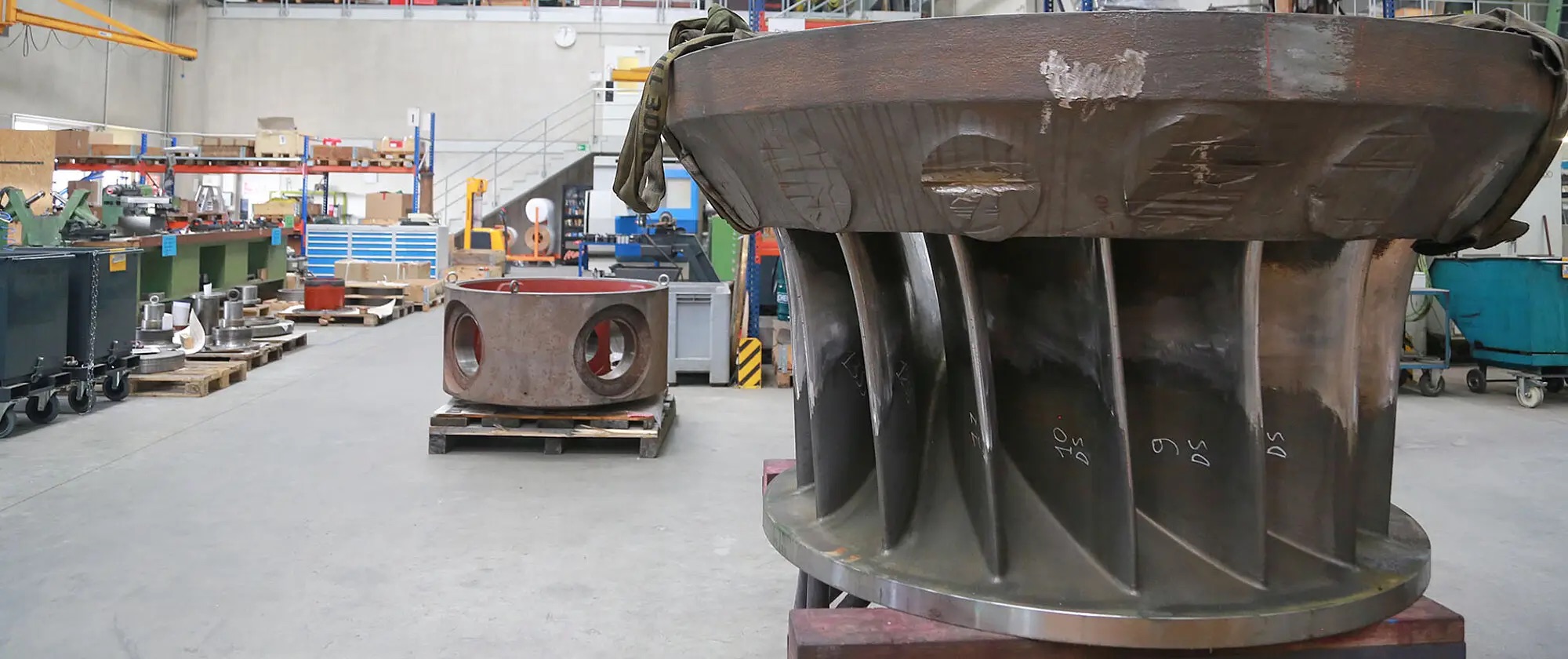About us
The management of Stellba Hydro
How many hydropower plants are there in Germany? And where are they located?
Lutz Juhrig: There are a total of 7.700 hydroelectric power plants in Germany, 1.332 in Switzerland and 3.150 in Austria. A large proportion of these are power plants with a smaller power output, i.e. small-scale hydroelectric power plants, some of which have an output of well under 1 MW. The sum of all power plant capacities adds up to about 9.8 GW.
Due to the topography, these power plants are mainly located in the south of the country, along the rivers and in the area of the low and high mountains. Our company site is therefore conveniently located in the middle of southern Germany.
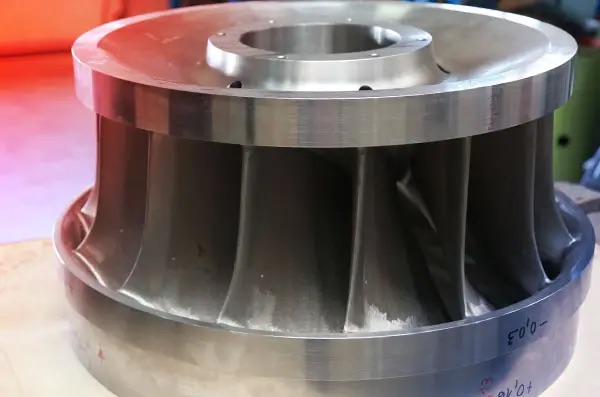
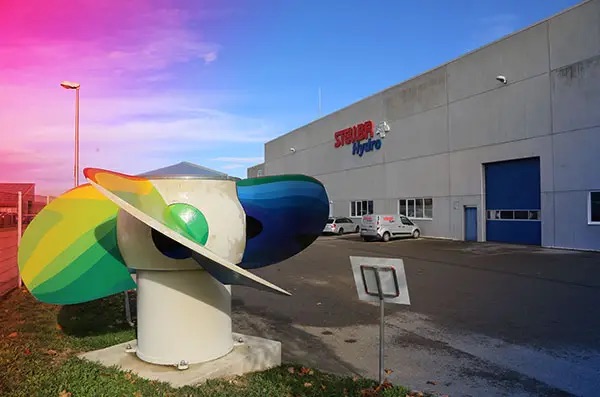
What advantages do hydropower plants have over other types of electricity generation?
Lutz Juhrig: Hydropower is a mature technology that has been successfully tested for decades. In contrast to solar and wind energy, energy production is available at a constant rate and is therefore reliable and plannable. Hydropower plants are therefore characterized by high availability and a very high efficiency of over 90%. In comparison: wind energy has an efficiency of about 50 percent, solar power one of a maximum of 18 percent. This is why hydropower is still the only economic and established way to store energy in large quantities.
This is achieved by pumped storage technology, which is used to transport water to higher altitudes. The pumps required for this are fed by the excess electrical energy stored in the pumped water. This energy can then be made available again in a very short time by means of turbines. This fast reaction time, with which the energy can be made available again when needed, is only one aspect that speaks for the great superiority of pumped storage technology over other options.
What role do hydropower plants play in the energy turnaround?
Lutz Juhrig: Energy production from solar and wind energy can only be planned to a limited extent, because production from these sources fluctuates very strongly due to weather conditions. Hydroelectric power, on the other hand, is continuously available - hydroelectric power plants are capable of base load.
Hydroelectric power plants are thus an important pillar for stabilizing the electricity grid. In addition - and this is particularly important - pumped storage power plants can compensate for fluctuations that often occur due to the highly weather-dependent solar and wind energy in a flash.
It already happens today that one day almost 100 percent of electrical energy is generated by wind and photovoltaics, and the next day it is 0 percent. This will sooner or later lead to a large-scale power outage, in which hydroelectric power plants are an indispensable option for rebuilding the power grid. The probability of such a blackout increases with the further expansion of wind energy and photovoltaics.
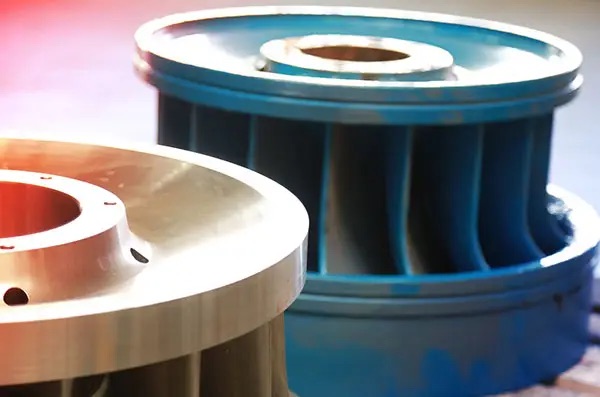
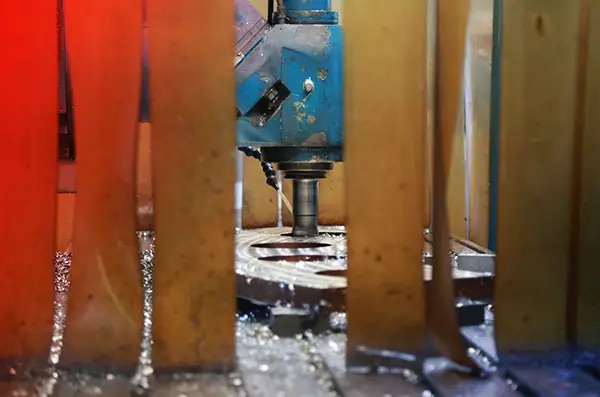
Can hydropower also contribute to mitigating climate change?
Lutz Juhrig: It is predicted that extreme weather conditions will increase. These include orographic lifting in the foothills of the Alps and low mountain ranges, which will lead to large amounts of rain and, as a result, to tidal waves in the rivers. The usual method of flood protection is to stem the flow of rivers. In contrast, it is much more effective to stop the flood in the area of its origin - by building retention basins. A prominent example is the Sylvenstein reservoir in the source area of the Isar in Bavaria, which has been protecting downstream towns like Bad Tölz from flooding since its construction. This protection is made possible by its storage volume of approx. 80 million m³, which can be used to control water volumes. This control is done in close cooperation with the weather forecast. Thus, if a heavy rainfall event is predicted for the region, for example a heavy thunderstorm, the storage tank is emptied as far as possible in advance in order to be able to safely collect the rainfall quantities that occur afterwards. The flow rate from the reservoir is controlled by turbines that feed electricity into the grid.
With the construction of retention basins, flood events in river courses can therefore be very effectively reduced or avoided altogether, and at the same time electrical power can be generated, using regenerative energy.
If hydropower plants are a clean and reliable method of generating electricity - why not built more of them?
Lutz Juhrig: In Germany and Central Europe there is the impression that most of the worthwhile locations have already been developed. Depending on the point of view, hydropower could still be expanded by 20 to 30 percent. For example, two more power plants with a larger capacity could be built downstream of Iffezheim, which is currently the largest Rhine power plant with a capacity of around 150 MW. However, this fails due to resistance from environmental associations.
Therefore, at best, locations on smaller rivers and existing transverse structures are suitable for further hydropower plants. However, the EU Water Framework Directive requires the passability of water bodies. Hydropower makes it possible to finance this requirement by allowing power plant operators to invest in upstream and downstream fish ladders that have to be built at existing transverse structures. Last but not least, the VLH turbine is a proven environmentally friendly option here that can help to improve river passability.
Another conceivable and increasingly important option is the construction of smaller decentralized pumped storage power plants, which would help to stabilize the electricity grid. According to independent studies, there is unlimited potential for this in Germany. However, the construction of hydropower plants is preceded by a lengthy approval process. Authorities are often influenced by stakeholders such as fishermen's associations, which hinders the further expansion of hydropower. This is where our approaches to modernising water turbines in existing power plants with a strong focus on ecological concerns such as fish-friendliness can help.
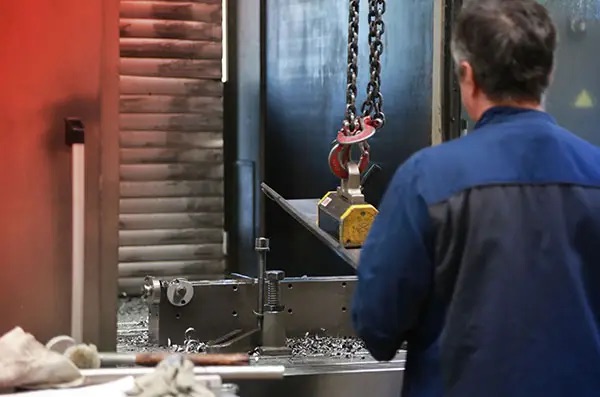
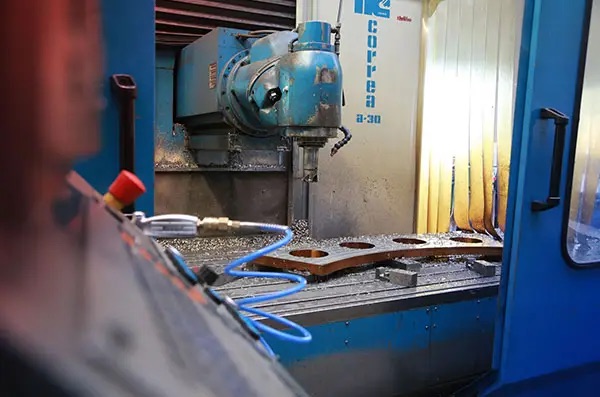
Mr Meier Westhoff, when and why did you take over Stellba Hydro?
Dirk Meier Westhoff: Renewable energies are the future. Hydropower is part of it and helps to save CO2. In this respect, the future belongs to Stellba Hydro with its highly motivated and professional team with a lot of know-how in the field of hydropower. On this basis I would like to further expand my commitment to hydropower.
What benefits do you offer operators of hydroelectric power plants?
Lutz Juhrig: We are in a position to find optimal, tailor-made renovation and modernisation solutions for any location, regardless of the type of turbine and the age of the plant. Our flexible solutions allow existing turbines to be largely retained - only the worn parts of the turbines and the components that stand in the way of an increase in efficiency and performance are replaced.
With the help of flow simulations, we can identify and implement considerable optimisation potential. This not only increases our annual workload, but also expands our operating range. Stellba Hydro builds durable and robust turbines which are characterised by a high degree of running smoothness and which set standards, also from an ecological point of view. Downtimes and the necessary operating expenses are minimised and maintenance intervals are extended.
Cavitation plays a decisive role here. Cavitation occurs at low pressure in the machine depending on the operation and can destroy the hardest steel. In older turbines this was common practice and involved considerable repair costs for the operator. Here, in most cases a new design can be created using modern simulation technology that prevents cavitation and thus avoids considerable repair costs. Of course, we also provide the operator with advice and support after completion of the project.
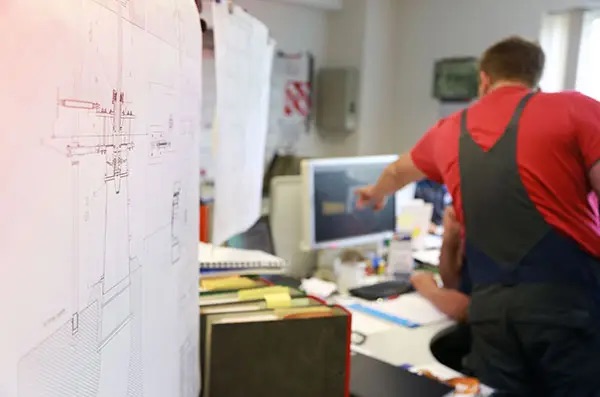
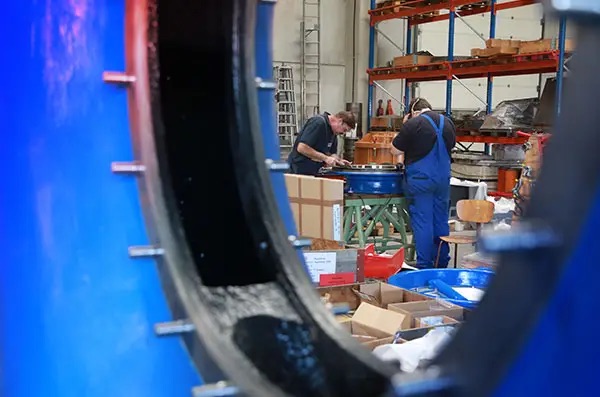
How does a project work in general? How do you proceed exactly, for example, in the optimization process?
Lutz Juhrig: At Stellba Hydro all parties involved work hand in hand: Competent project managers accompany every project from the very beginning - starting with consulting, design and production up to installation. In the course of a detailed analysis meeting we first discuss all possibilities: In doing so, we take into account the wishes and preferences of the operators. It is possible to conduct potential studies in advance. Targeted and efficient engineering is an important milestone in every project.
Our wealth of experience with plants from a wide range of manufacturers helps us to develop the right solution for the power plant in question and thus to complete projects in the shortest possible time in the interests of the customer.
What are the opportunities and risks for operators of hydropower plants?
Lutz Juhrig: Thanks to modern technology, it is now possible for operators to decisively improve the output - and thus the yield - of their power plant with manageable effort. This may be through a permanent improvement in plant availability, an increase in turbine efficiency or intelligent operating behaviour, for example by optimising multi-machine operation.
In addition, power plant operators are able to efficiently expand the operating range of hydraulic systems and optimize various operating characteristics, for example by avoiding vibrations or improving mechanical properties. In addition, increasingly durable materials are protecting the bearings installed in power plants from loads. Ecological improvements also facilitate the approval process for the construction of hydropower plants and, if necessary, increase the feed-in tariff. On the other hand, however, further ecological requirements in the future may mean that operating licences are not extended. Here it is important to look for fish and water-friendly solutions in advance, such as our fish-friendly turbine runners or water- instead of oil-lubricated bearings.
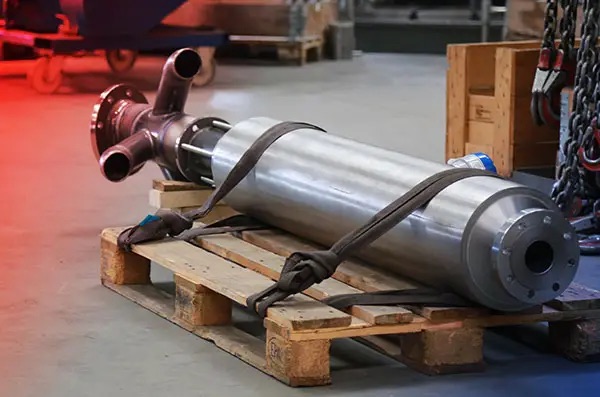
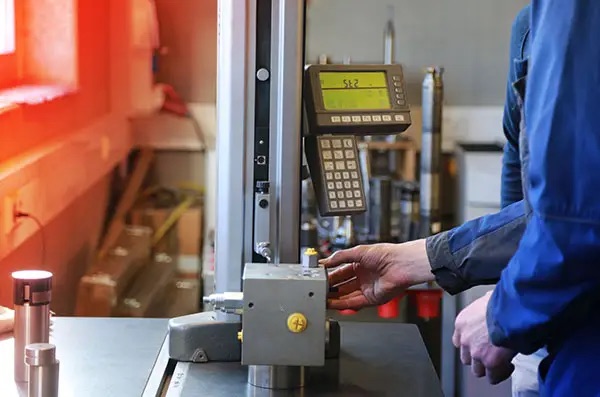
How can Stellba Hydro support you in exploiting unused potential?
Lutz Juhrig: We are specialized in identifying and assessing potential. Our experience as well as our engineering tools enable us to find optimal solutions for every power plant site. Tailor-made turbine design is our motto: While operators of hydroelectric power plants get standardised turbines from other suppliers, we develop systems that are specially adapted to the respective location. We are happy to show our customers various possibilities on our premises.
What is the unique selling point of Stellba Hydro compared to other machine and plant manufacturers?
Lutz Juhrig: Thanks to our many years of dealing with turbines of different ages, from different manufacturers and of different types, we have a wide range of know-how. Because we have set ourselves the goal of developing consistent, tailor-made designs, we bring our engineering services to every project. In order to be able to respond flexibly to the high demands of our customers, we use virtual test benches and three-dimensional flow simulations.
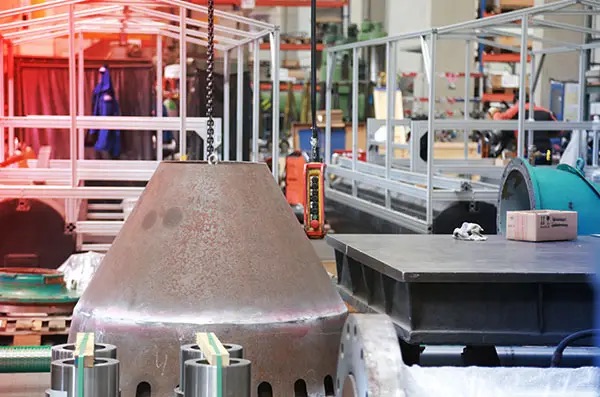
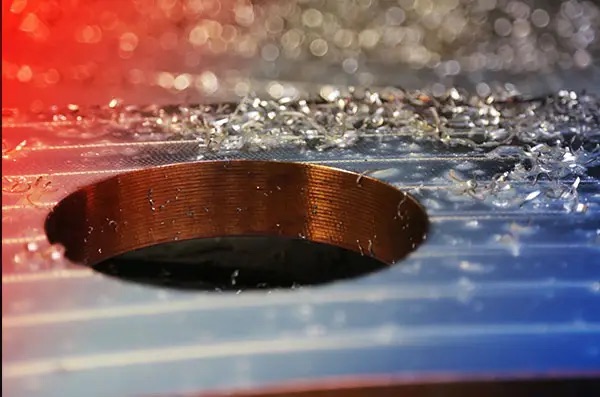
Where's this journey going? Are you aiming for worldwide expansion?
Dirk Meier Westhoff: Stellba Hydro is already active worldwide. Of course we want to grow - but not at any price. It is more important for us to be able to offer our customers technically high-quality and future-oriented solutions. Then further growth will happen by itself. In addition, we intend to buy, modernise and operate our own hydropower plants in Europe. In this respect, we are happy to receive any sales offer in this context, which we will gladly examine.
You would like to use our expertise for your hydroelectric power plant?
Call us, write an e-mail or use the contact form. Our experts will be happy to advise you.
Stellba Hydro GmbH & Co KG I Eiffelstr. 4 I D-89542 Herbrechtingen I Tel. +49 7324 96 80 0 I Fax +49 7324 96 80 66 I E-mail: info@stellba-hydro.de

